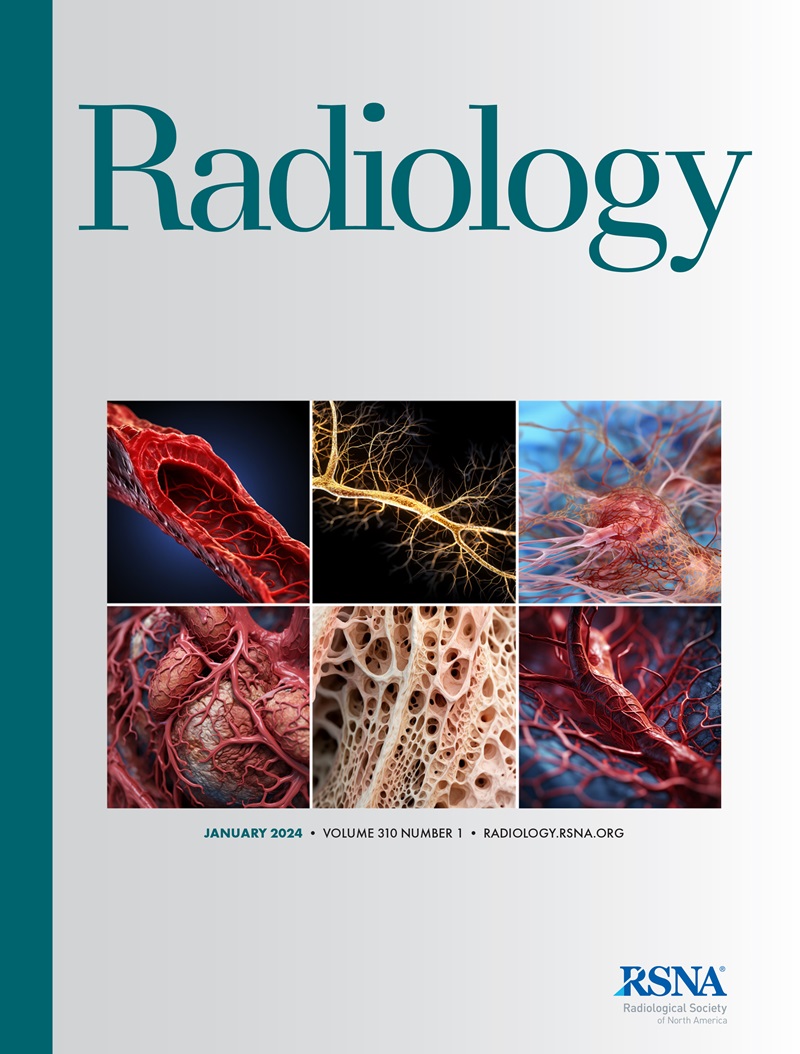放射节段切除术在肝脏恶性肿瘤治疗中的应用进展。
IF 15.2
1区 医学
Q1 RADIOLOGY, NUCLEAR MEDICINE & MEDICAL IMAGING
引用次数: 0
摘要
经动脉放射栓塞(TARE)是一种图像引导的癌症治疗方法,通过肝动脉将携带放射同位素(如钇90 (90Y))的微球输送到肝脏恶性肿瘤。历史上,作为晚期肝癌的姑息性治疗,带有90Y的TARE是通过带消融目的的90Y微球的节段性递送而发展起来的,称为放射节段切除术。放射节段切除术的目的是向目标肝节段提供高剂量的辐射,限制正常肝实质暴露于辐射的体积。放射节段切除术的特点是高,持续的反应率和高的外植体坏死率。目前,放射节段切除术是Child-Pugh a级肝功能和体积小于等于8厘米的孤立性肝细胞癌患者公认的治疗选择。它可以应用于不适合切除或热消融的肝转移。放射节段切除术的患者选择、技术和放射剂量学的进步重新定义了TARE作为治疗性治疗的目标。随着剂量学和患者选择的改进,在放射节段切除术后的治疗后成像中观察早期反应变得更加普遍,甚至在治疗的第一个月内完全缓解。本文综述了放射节段切除术的历史、扩大应用范围及未来发展方向。本文章由计算机程序翻译,如有差异,请以英文原文为准。
The Evolving Application of Radiation Segmentectomy for the Treatment of Hepatic Malignancy.
Transarterial radioembolization (TARE) is an image-guided cancer treatment that delivers microspheres carrying radiation-emitting isotopes, such as yttrium 90 (90Y), to liver malignancy via the hepatic arteries. Historically a palliative therapy for advanced liver cancer, TARE with 90Y has evolved via the segmental delivery of 90Y microspheres with ablative intent, known as radiation segmentectomy. The purpose of radiation segmentectomy is to deliver high radiation doses to targeted hepatic segments, limiting the volume of normal hepatic parenchyma exposed to radiation. Radiation segmentectomy is characterized by high, sustained response rates and high rates of explant necrosis. Currently, radiation segmentectomy is a recognized treatment option for patients with Child-Pugh class A liver function and solitary hepatocellular carcinoma that is 8 cm or smaller in size. It can be applied for hepatic metastases not amenable to resection or thermal ablation. Advancements in patient selection, technique, and radiation dosimetry for radiation segmentectomy have redefined the goal of TARE as a curative therapy. With improved dosimetry and patient selection, it has become more common to observe early responses at posttreatment imaging after radiation segmentectomy, even complete response within the first month of treatment. This article reviews the history of radiation segmentectomy, its expanding applications, and future directions.
求助全文
通过发布文献求助,成功后即可免费获取论文全文。
去求助
来源期刊

Radiology
医学-核医学
CiteScore
35.20
自引率
3.00%
发文量
596
审稿时长
3.6 months
期刊介绍:
Published regularly since 1923 by the Radiological Society of North America (RSNA), Radiology has long been recognized as the authoritative reference for the most current, clinically relevant and highest quality research in the field of radiology. Each month the journal publishes approximately 240 pages of peer-reviewed original research, authoritative reviews, well-balanced commentary on significant articles, and expert opinion on new techniques and technologies.
Radiology publishes cutting edge and impactful imaging research articles in radiology and medical imaging in order to help improve human health.
 求助内容:
求助内容: 应助结果提醒方式:
应助结果提醒方式:


